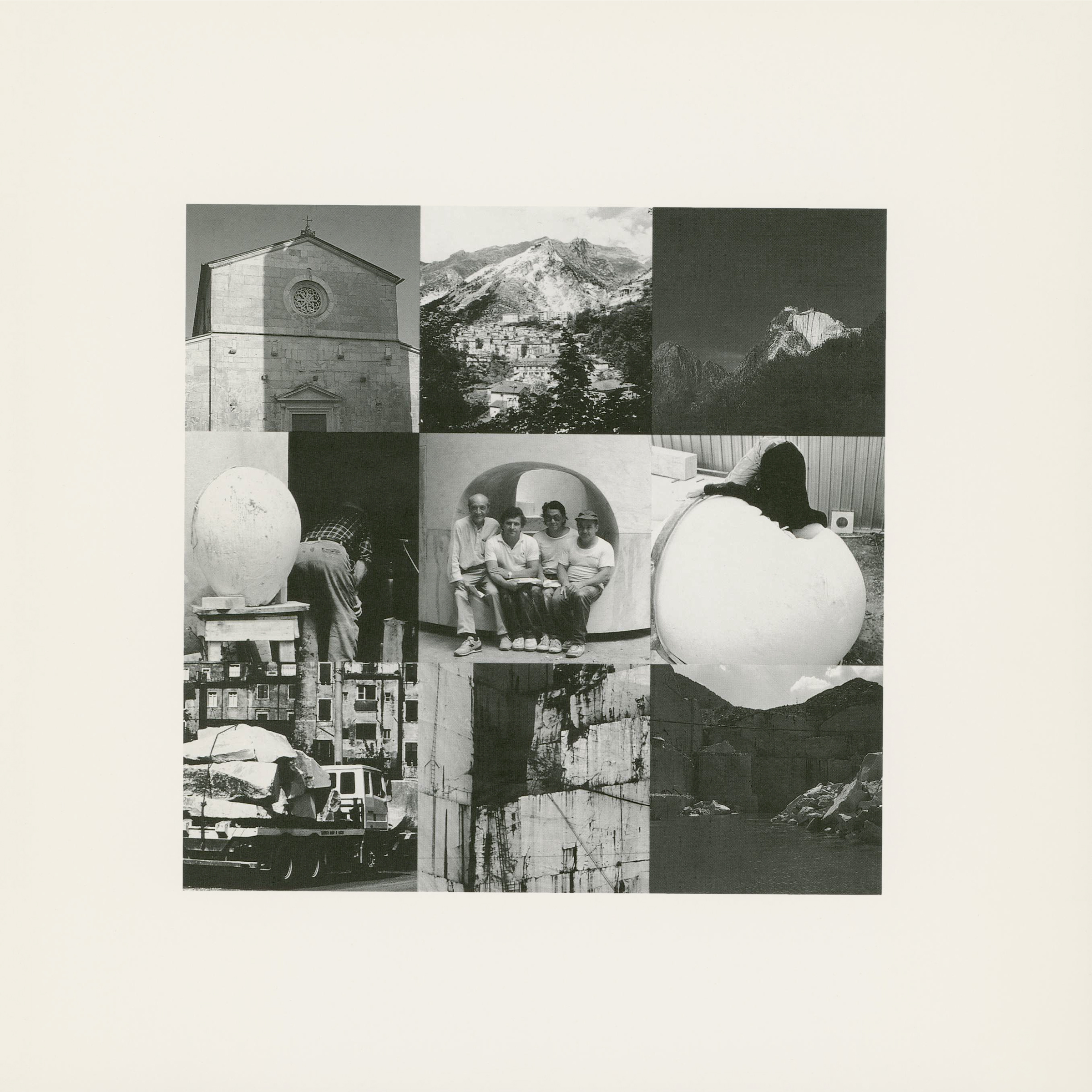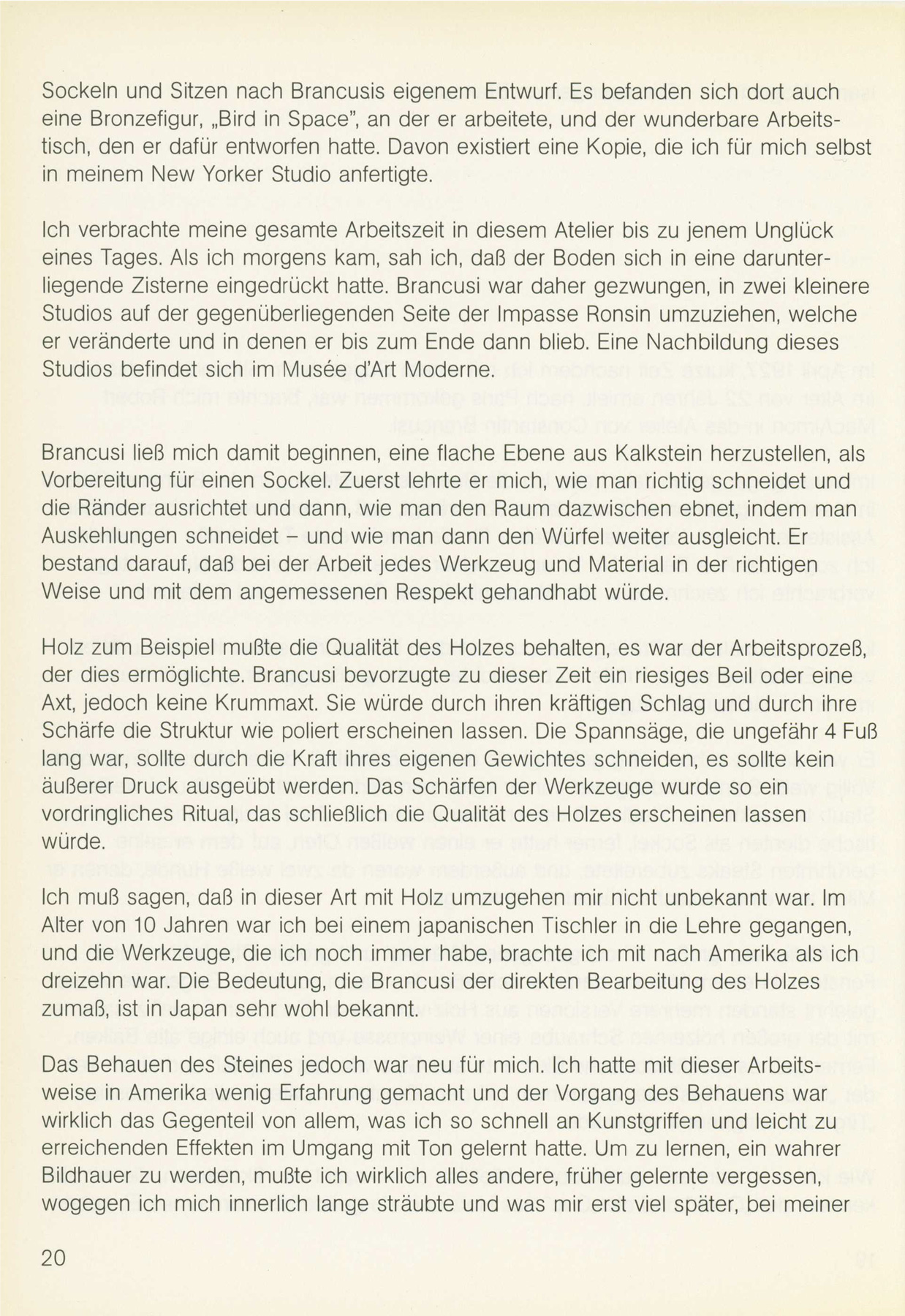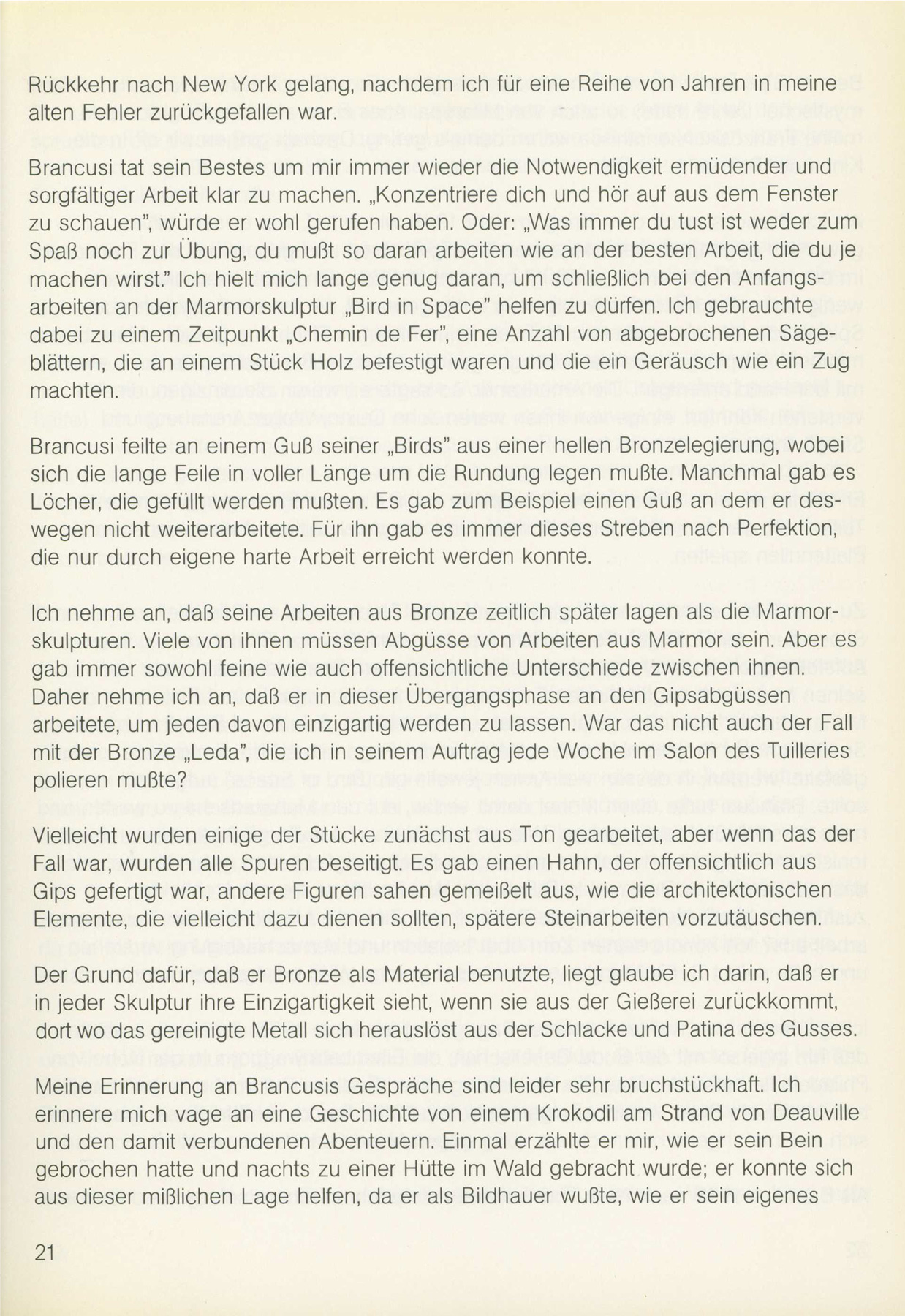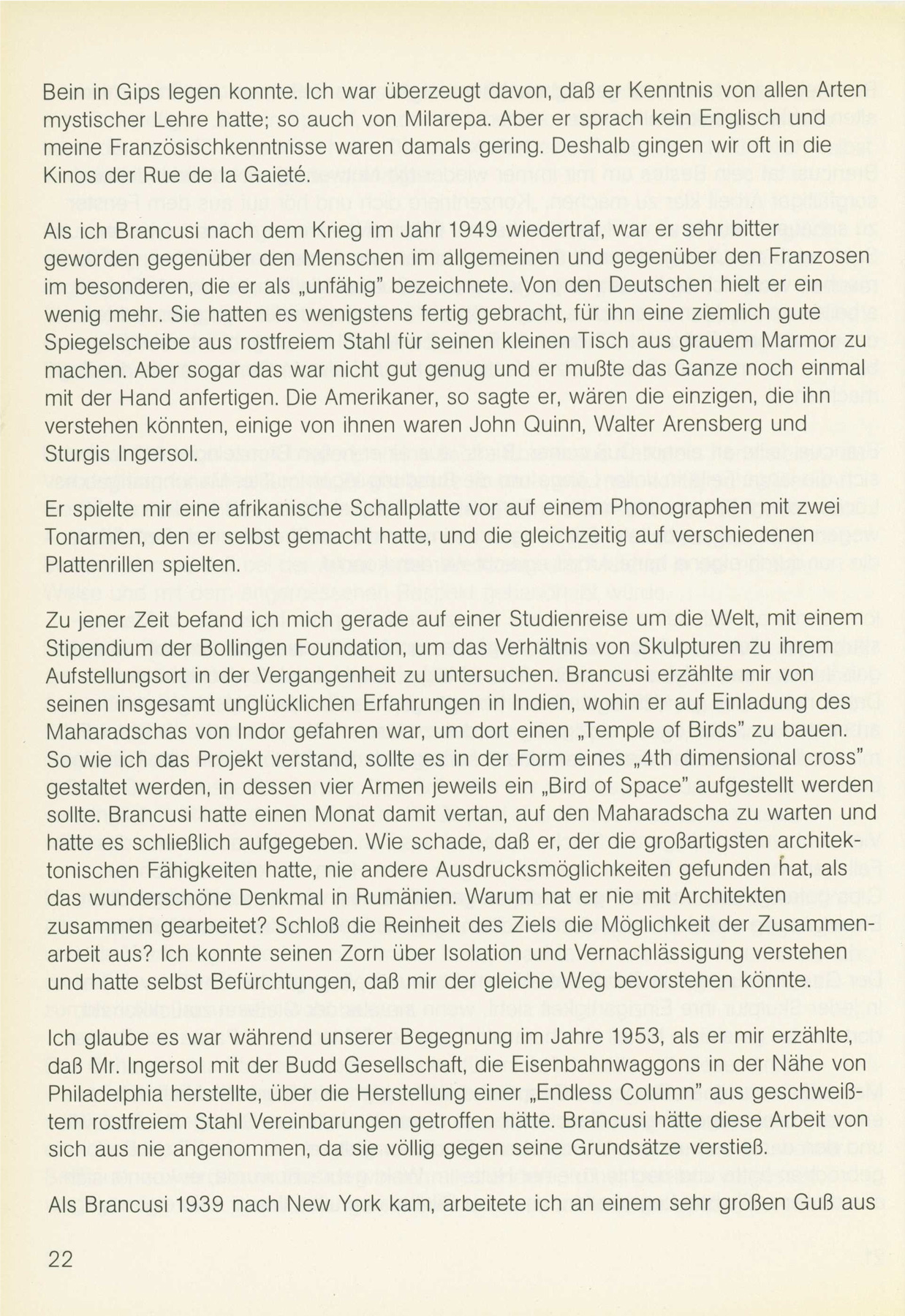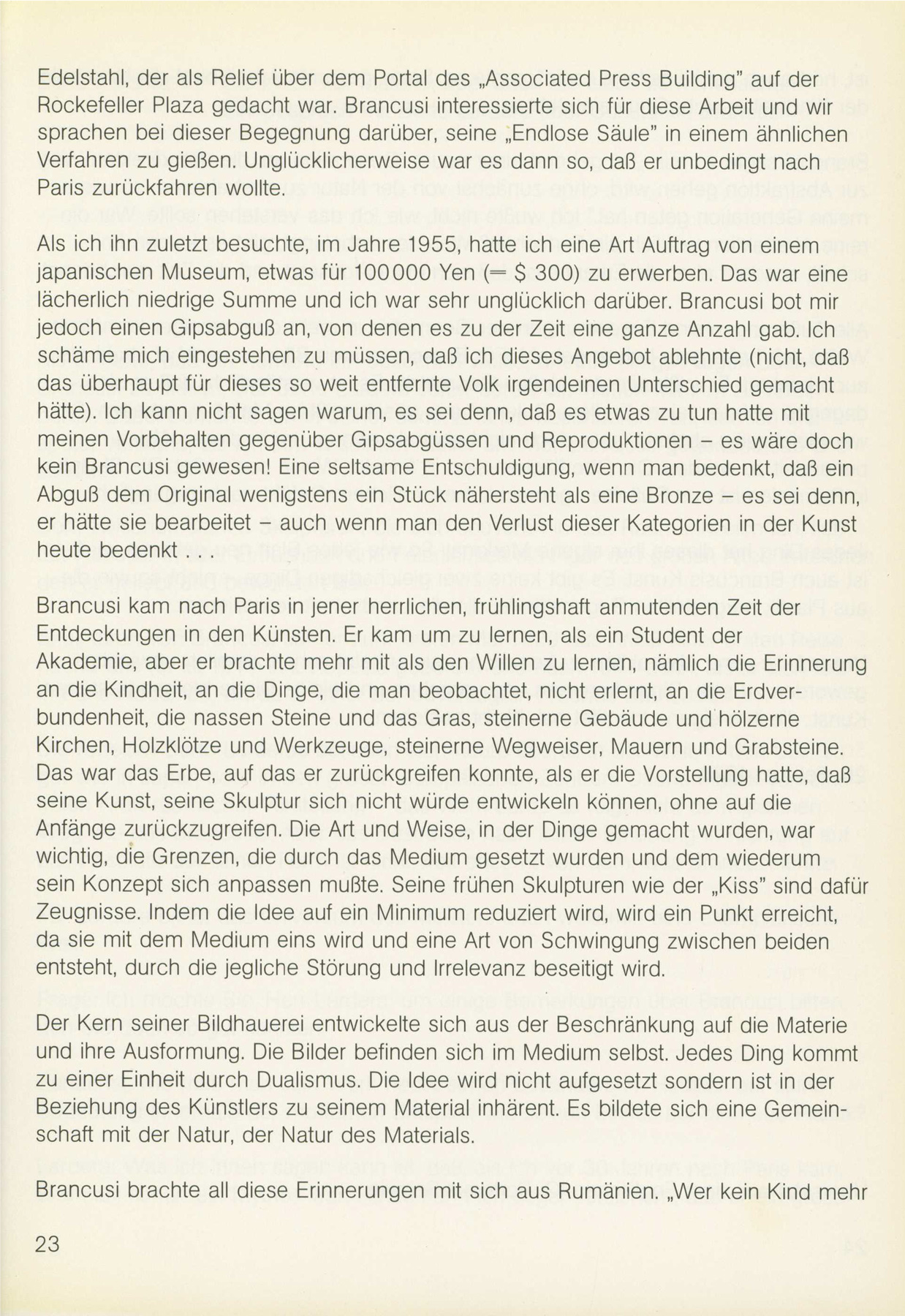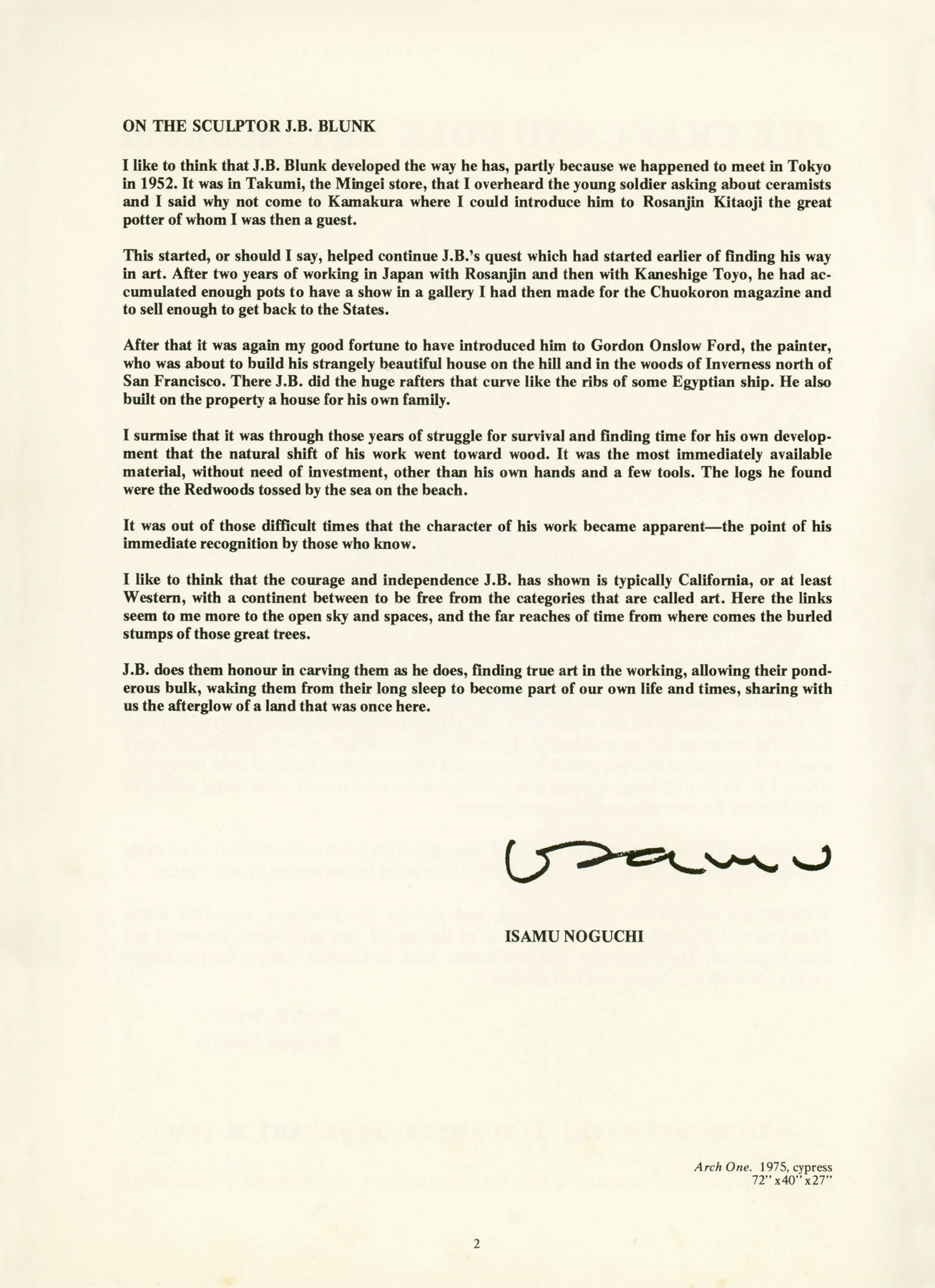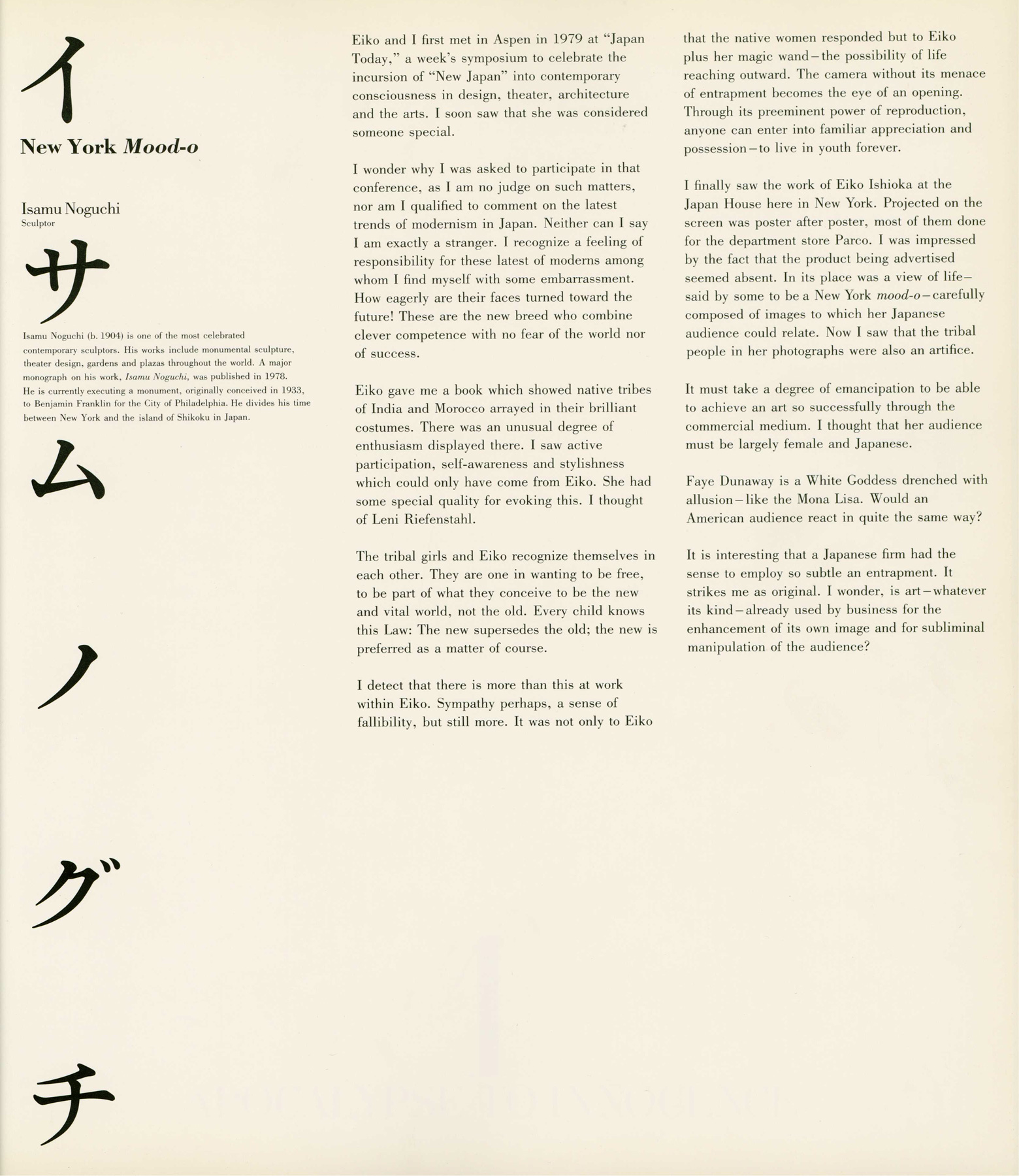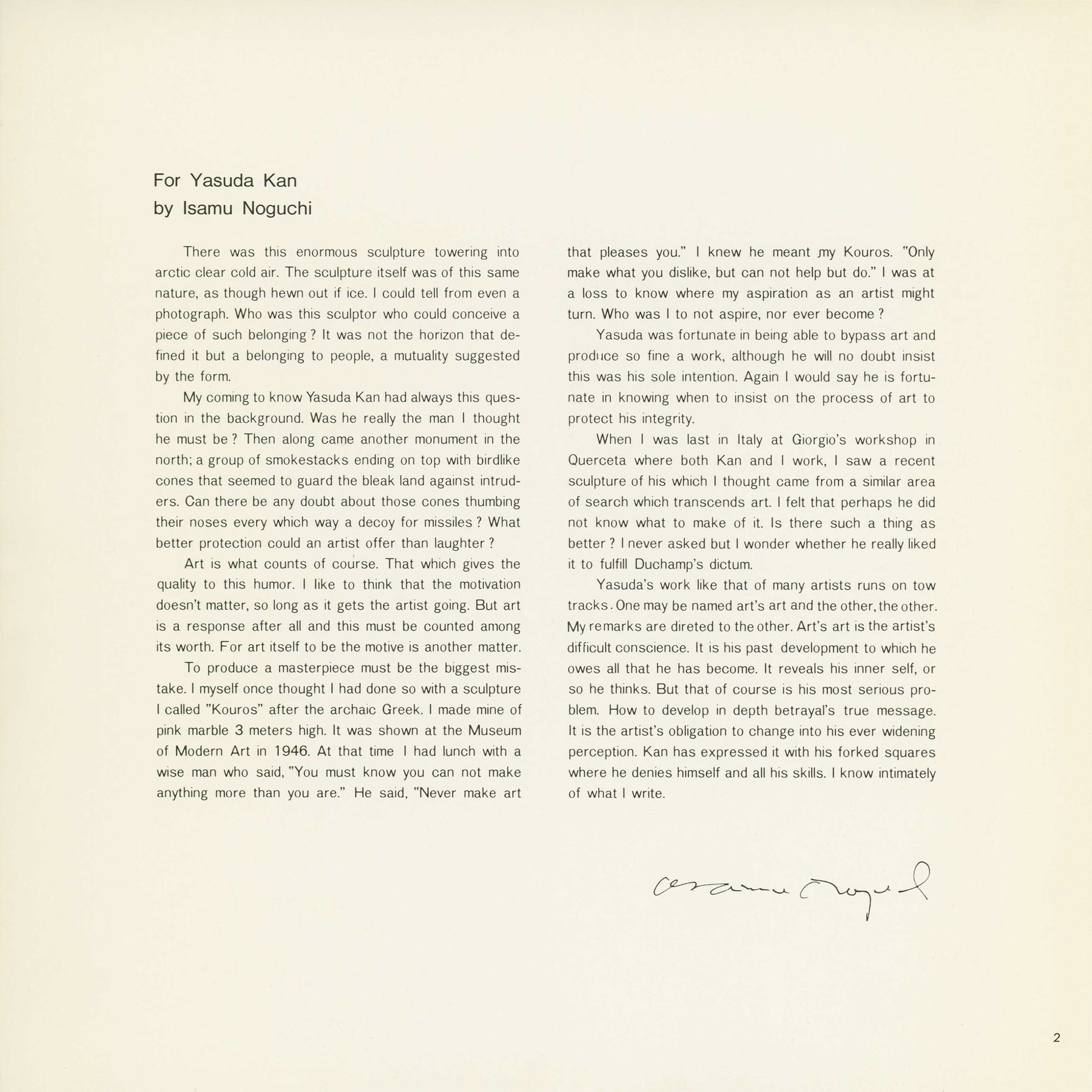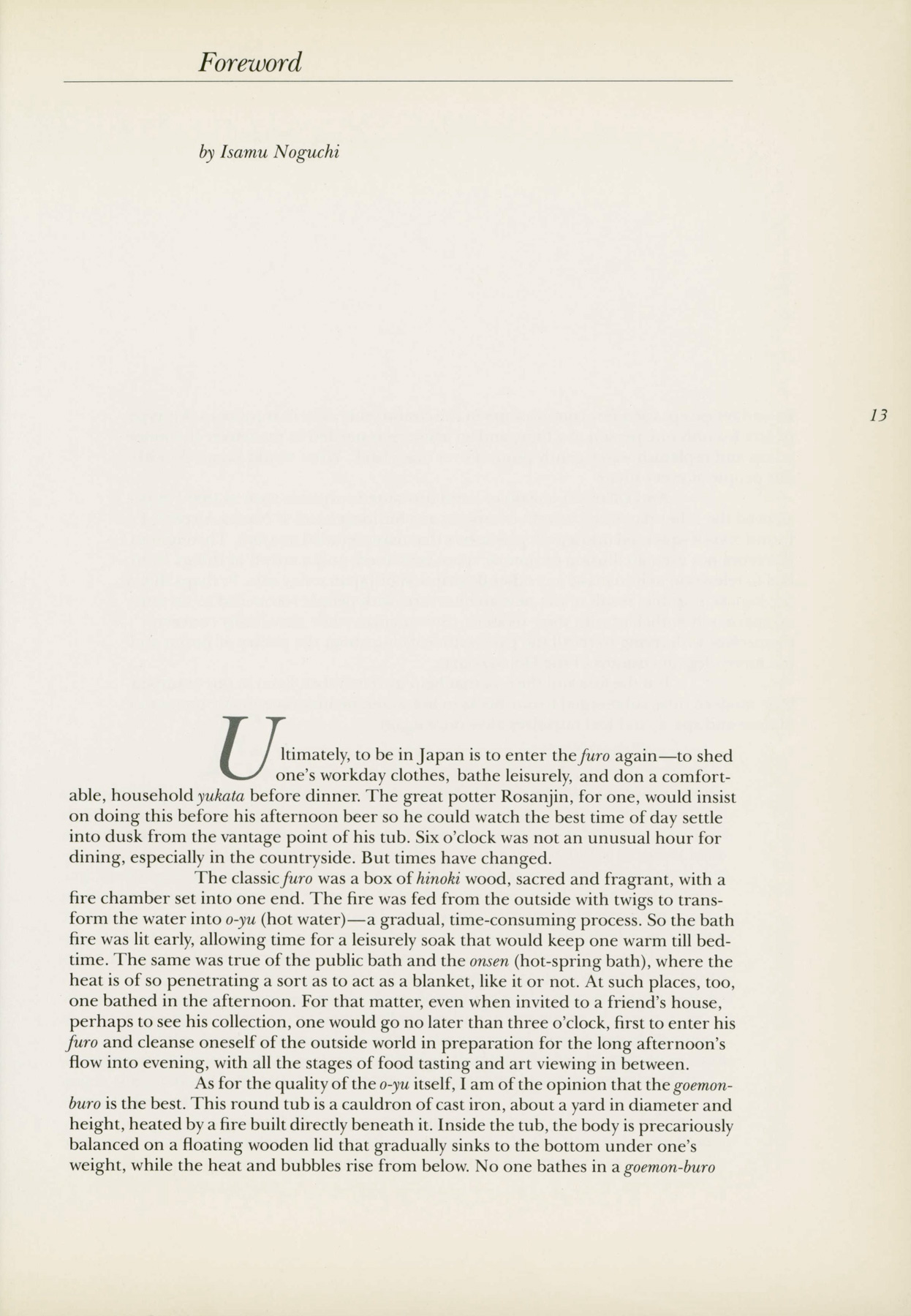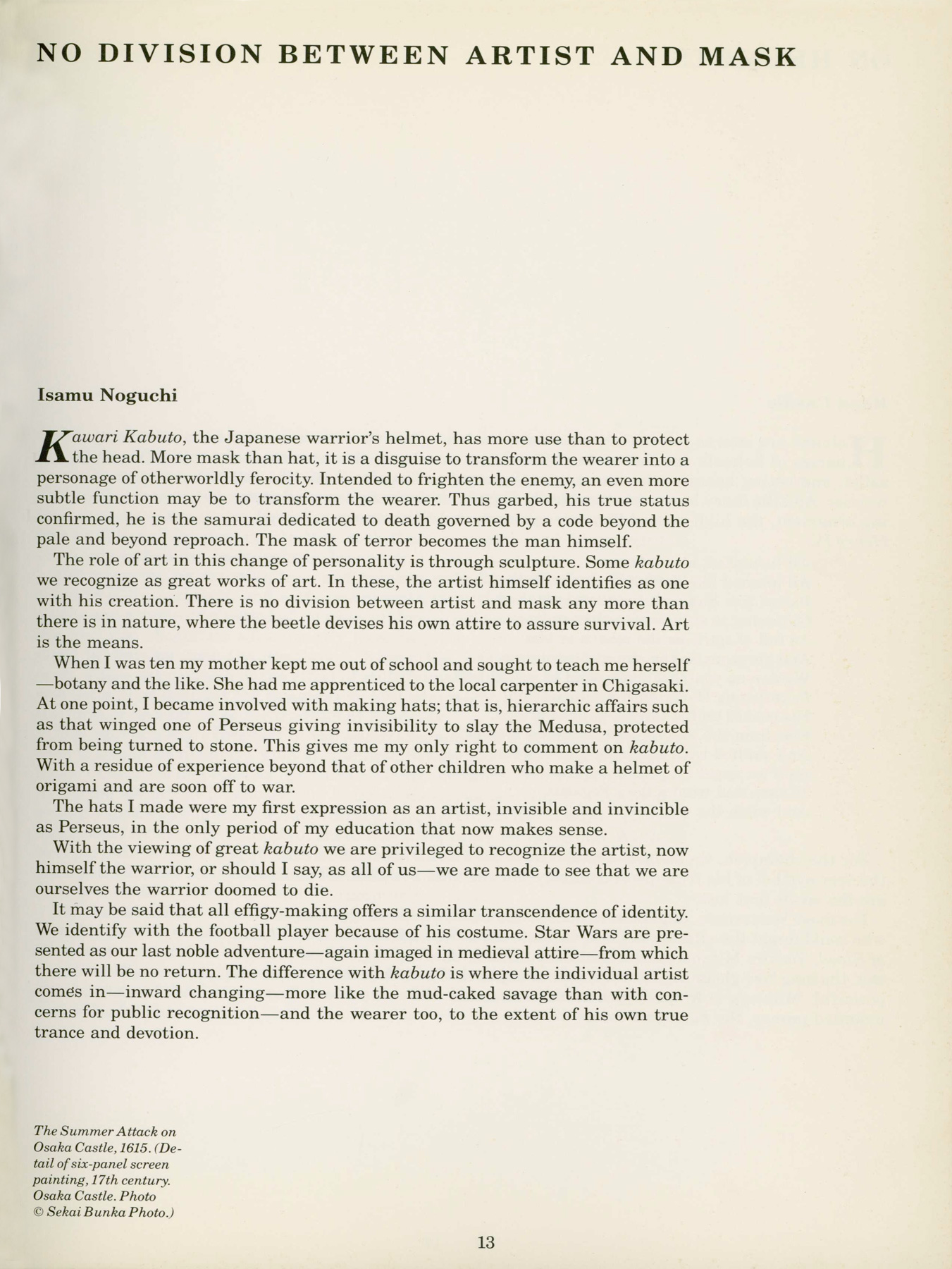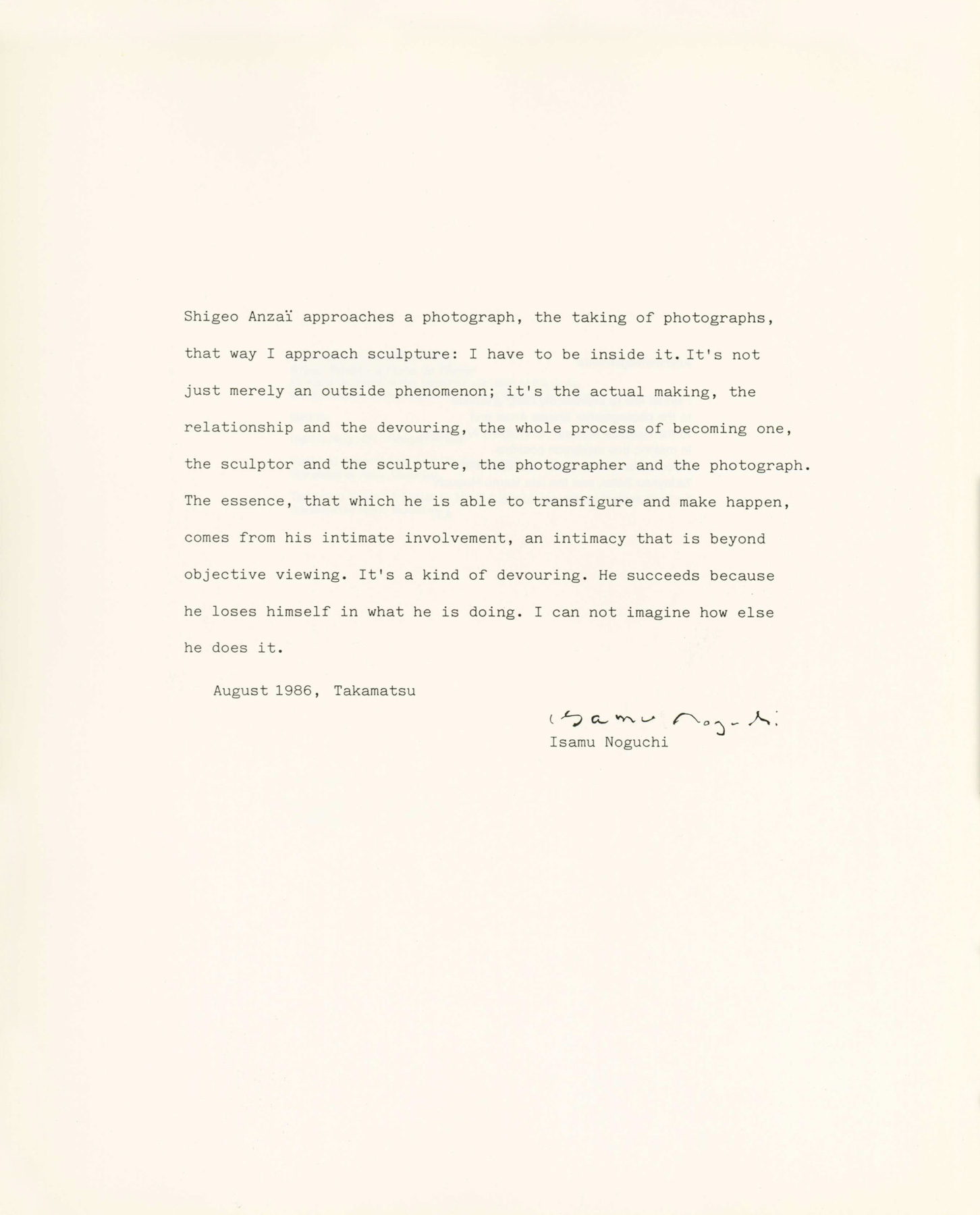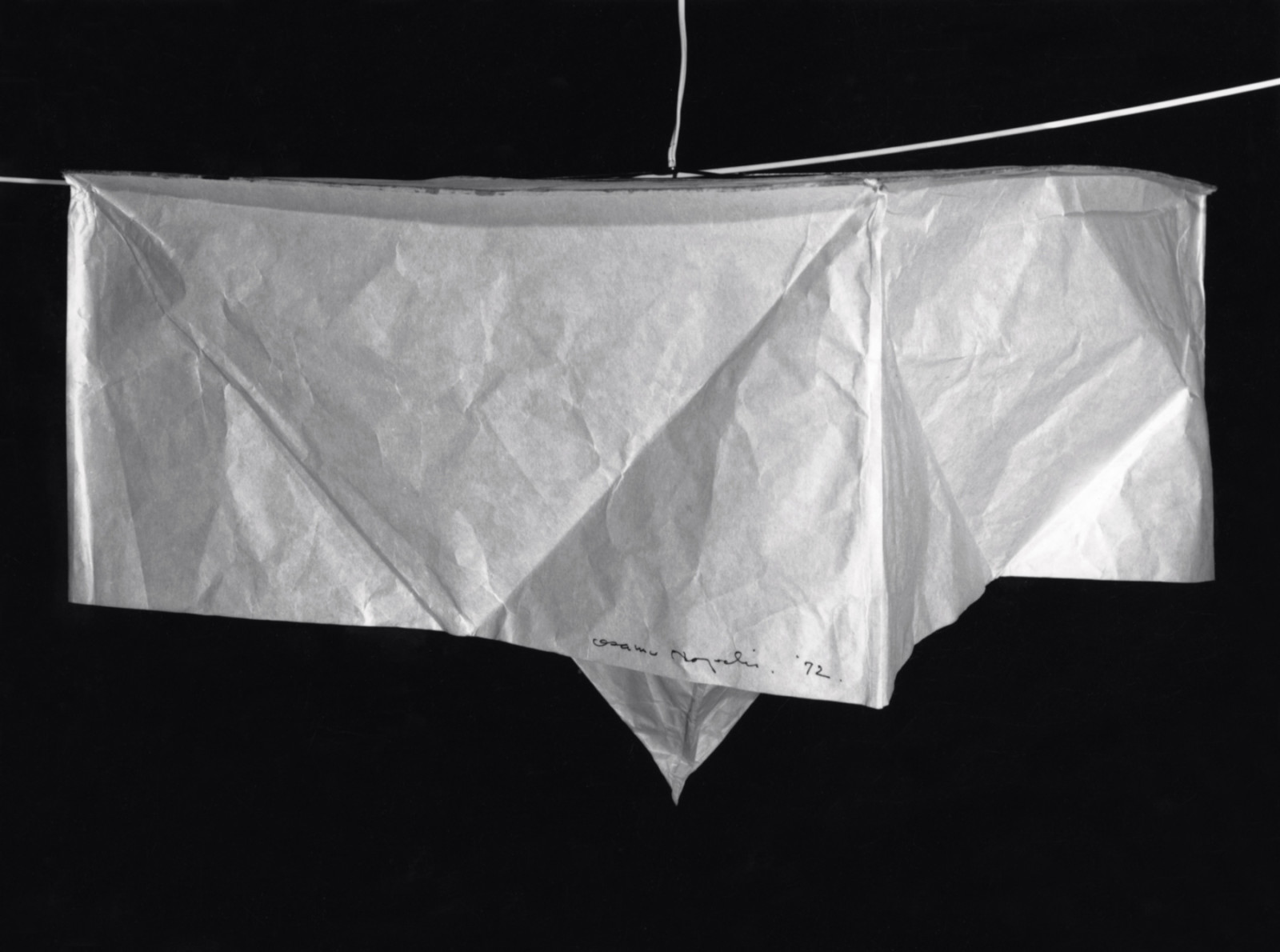Isamu Noguchi was a compelling writer when it came to his own way of thinking and on subjects of immediate concern to his work. But these occasional pieces are something else. In the 1960s, paralleling his career as an artist and designer, Noguchi became a sought-after explainer of East to West and vice versa. Individually, it might be possible to dismiss these pieces as favors for friends: coincidences of affinity and affiliation. But as a body of work, they offer a surprisingly comprehensive look at Noguchi’s complex interest in material culture: the traditional crafts of Japan in particular, and the uses and uselessness—the social function and existential power—of art. Ranging across architecture, fashion, design, paper, samurai helmets, flower arranging, bathing, kites, painting, and even sculpture, they produce a kind of supplementary intellectual autobiography.
Above: Kan Yasuda. Tokyo: Gyararii Ueda Ueahausu, 1985, 23. All materials from The Noguchi Museum Archives.
